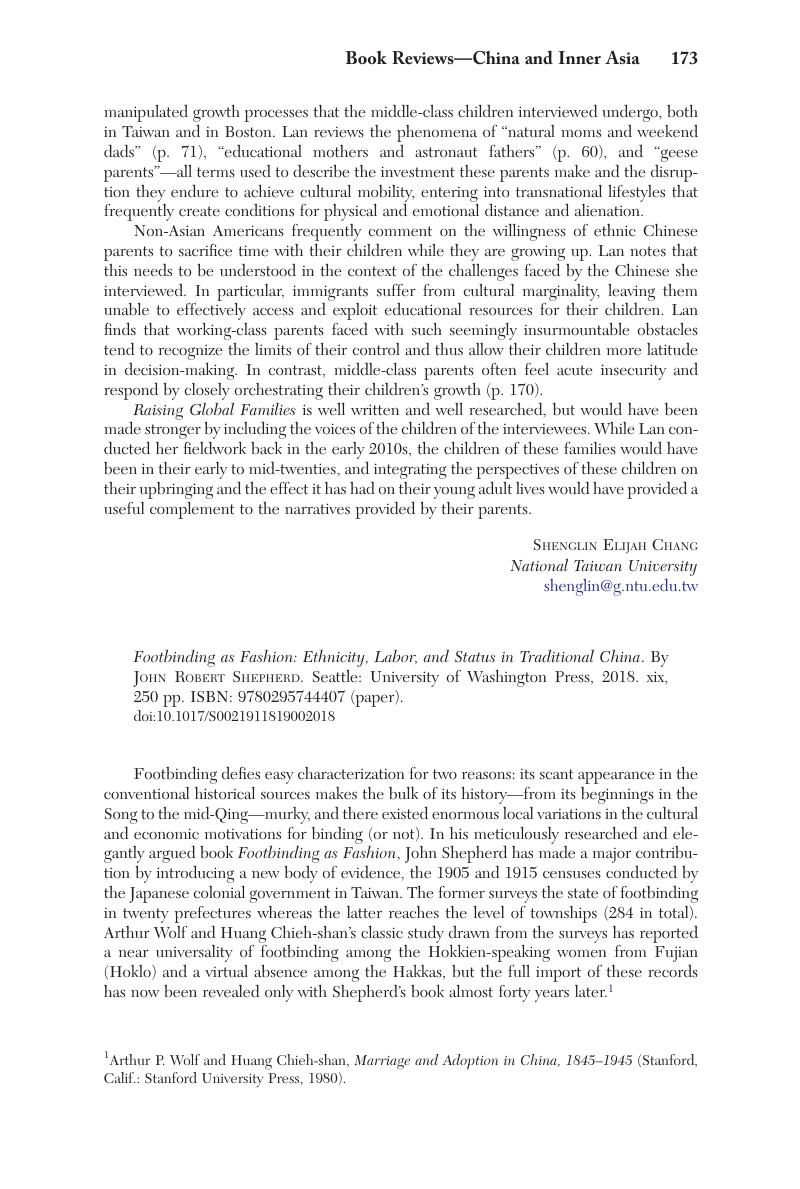No CrossRef data available.
Article contents
Footbinding as Fashion: Ethnicity, Labor, and Status in Traditional China. By John Robert Shepherd. Seattle: University of Washington Press, 2018. xix, 250 pp. ISBN: 9780295744407 (paper).
Review products
Published online by Cambridge University Press: 24 February 2020
Abstract

- Type
- Book Reviews—China and Inner Asia
- Information
- Copyright
- Copyright © The Association for Asian Studies, Inc. 2020
References
1 Wolf, Arthur P. and Chieh-shan, Huang, Marriage and Adoption in China, 1845–1945 (Stanford, Calif.: Stanford University Press, 1980)Google Scholar.
2 Levy, Howard S., Chinese Footbinding: The History of a Curious Erotic Custom (New York: Bell Publishing, 1967), chap. 10Google Scholar. Assisted by four male Chinese friends, Levy interviewed eleven women, aged sixty-six to eighty-nine by Chinese count, using a questionnaire. Six were born in Taiwan, four were born on the mainland, and one was unspecified. In addition, Levy had an “informal discussion” with one thirty-five-year-old woman and an interview with the husband of one informant.
3 The so-called “handicraft hypothesis” is formulated by anthropologists Hill Gates and Laurel Bossen based on their extensive fieldwork in rural Sichuan and Yunnan. That it may not be the best explanation for colonial Taiwan does not mean that it has no explanatory power for Sichuan and Yunnan. For the former, see Gates, Hill, Footbinding and Women's Labor in Sichuan (London: Routledge, 2015)Google Scholar; for the latter, see Bossen, Laurel, Chinese Women and Rural Development: Sixty Years of Change in Lu Village, Yunnan (Lanham, Md.: Rowman & Littlefield, 2002)Google Scholar. See also Bossen, Laurel and Gates, Hill, Bound Feet, Young Hands: Tracking the Demise of Footbinding in Village China (Stanford, Calif.: Stanford University Press, 2017)CrossRefGoogle Scholar, and research articles by Melissa J. Brown.
4 Not all the sources Shepherd considers ethnographic observations are such, if one wants to follow his distinctions. Xu Ke's Qingbai leicao (discussed on p. 156), for example, is a notation book full of unverifiable information not found in contemporary accounts. Nor are missionaries trained ethnographers.


